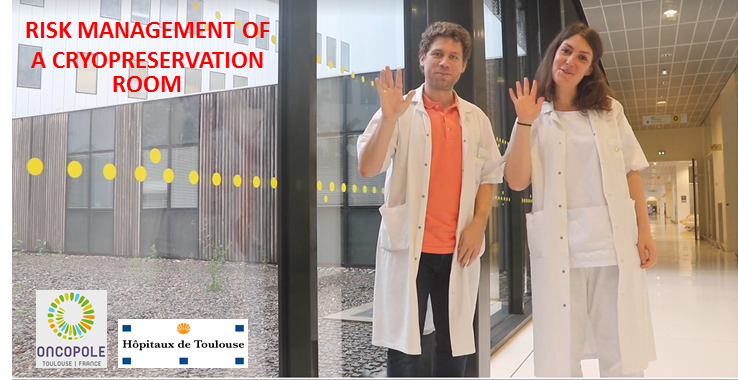Advertisment
GERPAC highlights 1: Cryopreservation of drugs – risk management

Article written by Christine Clark
Storage of drug products at ultra-low temperatures calls for understanding of the special risks involved…
Until recently cryopreservation for pharmaceutical products was only an issue for those dealing with advanced medicinal therapy products (ATMPs) such as CAR-T-cells but the launch of the Pfizer-BioNTech vaccine (BNT162b2) has brought this much closer to home. Jean-Baptiste Desbouges and his colleagues at the Oncopole, the Toulouse University Cancer Institute, realised that pharmacists might need to learn the basic principles of safe handling of products at ultra-low temperatures and made a video to explain the topic.
Cryopreservation makes use of liquid nitrogen. The gas is colourless, odourless, tasteless and fireproof with a boiling point of minus 196°C. One litre of liquid nitrogen expands to occupy a volume of 700 litres in its gaseous form. The earth’s atmosphere comprises 78% nitrogen.
There are three main risks associated with liquid nitrogen – asphyxia, burns (cold burns, frostbite) and explosions (due to trapped nitrogen expanding at room temperature under a covering of ice).
Before entering a cryopreservation room it is essential to check the oxygen level inside the room. The oxygen level is usually continually monitored and displayed on a gauge outside the room. The oxygen level should be about 21% – the same as atmospheric oxygen. Whilst in the cryopreservation room is essential to keep an eye on the oxygen level – displayed on a monitor – in this case in large red numbers. If the level falls below 19% there is a visual alarm and below 18% an audible alarm will sound. If the level falls below 19% operators must leave the room immediately.
In order to handle any sample or dose stored in liquid nitrogen operators must wear suitable protective equipment to prevent exposure of any skin to the liquid nitrogen and mask/goggles to protect the face in case of explosions/projectiles.
There is usually an emergency pack containing self-contained breathing apparatus outside the room. This is not to be used routinely but is there for use by emergency workers to prevent asphyxiation whilst removing and reviving someone who has been overcome by anoxia. It holds enough oxygen for 30 minutes.
For transporting cryopreserved material from the cryopreservation room to the laboratory purpose –built canisters or dry-shippers must be used. Both types have to filled manually from the liquid nitrogen storage tank. It is not advisable to transport the containers in confined paces (e.g. passenger lifts) because of the danger of asphyxiation if liquid nitrogen escapes.
Routine handling of cryopreserved material requires proper training, emphasised Mr Desbouges.
GERPAC – Groupe d’Évaluation et de Recherche sur la Protection en Atmosphère Contrôlée (Group for Evaluation and Research for Protection in Areas under Control).The 2020 virtual GERPAC Congress was held 23-24th November 2020.





